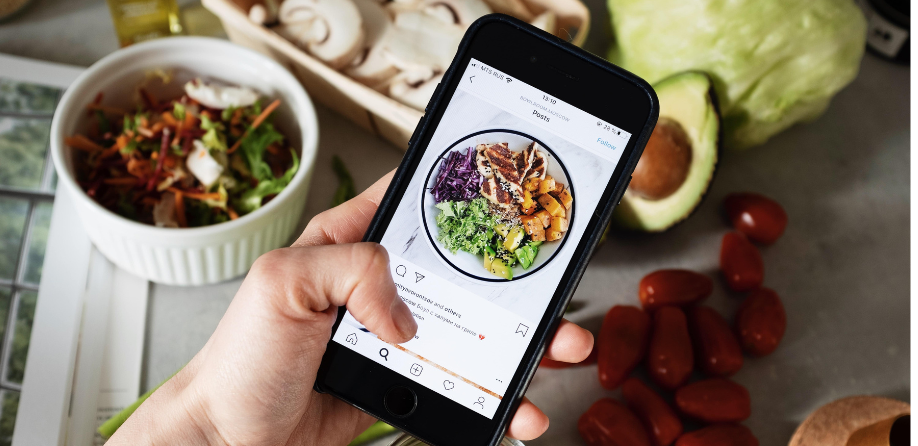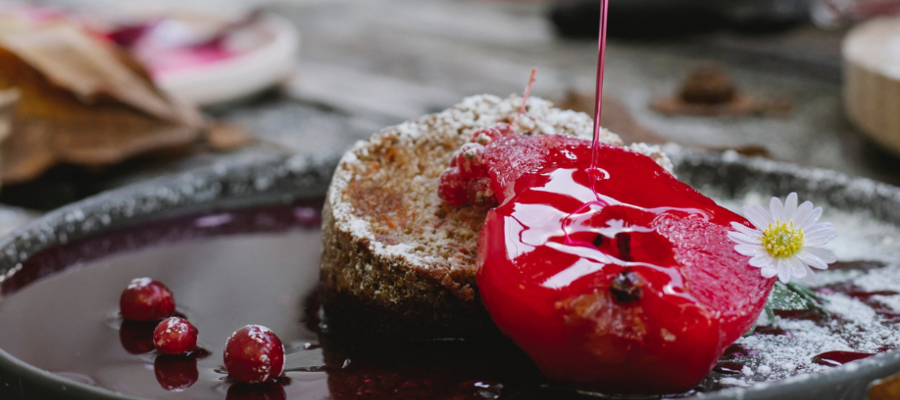Key Takeaways:
Social media: Platforms like Instagram and TikTok fuel food trends, driving demand for visually stunning dishes and experiences.
Sustainability: Consumers increasingly seek eco-conscious options like plant-based proteins and locally sourced ingredients.
Presentation matters: Restaurants prioritize plating and aesthetics to entice social media-savvy diners.
Fusion reigns: Blending cultural cuisines and flavor profiles creates exciting new culinary adventures.
DIY delights: Home cooks embrace sourdough starters, kombucha brewing, and other food trends.
Fashion takes a bite: Clothing and accessories adorned with food prints and designs reflect the trend's reach.
Food has become a trendsetter, with food fads and trends emerging and disappearing with the same speed as fashion trends. Social media, in particular, has played a significant role in this shift. Platforms such as Instagram and TikTok are filled with pictures and videos of food that are aesthetically pleasing, colourful, and visually stunning. People now post pictures of their food not just to show what they're eating but also as a form of self-expression and to showcase their personal style.
The rise of food as fashion has led to an increase in the popularity of specific types of food, such as avocado toast, rainbow bagels, charcoal ice cream, and unicorn lattes. These foods have become the latest craze, with people lining up to get their hands on them just to snap a photo for their social media accounts. The way food is presented has also become crucial, with restaurants and cafes paying just as much attention to the plating and presentation of their dishes as they do to the taste.
Food has become so intertwined with fashion that even fashion brands have started to incorporate food into their designs. In recent years, we have seen food-inspired clothing and accessories, such as pizza print leggings, burger earrings, and sushi socks. Food has even become a source of inspiration for high-end fashion brands such as Moschino, who created a whole collection inspired by McDonald's.
The relationship between food and fashion is not just limited to aesthetics; it also extends to sustainability and ethics. As people become more conscious of their impact on the environment and animal welfare, they are seeking out more sustainable and ethical food options. Veganism and plant-based diets are gaining popularity, and people are now opting for sustainable and locally sourced foods over mass-produced and processed options.
In conclusion, food has become more than just a necessity. It has become a statement, a form of self-expression, and a trendsetter. The rise of food as fashion has changed the way we think about food, from how it is presented to what we choose to eat. As we move forward, it will be interesting to see how food and fashion will continue to intersect and shape our cultural landscape.
Recent developing food trends
There are several recent developing trends in the world of food and fashion. Here are some examples:
Sustainability: As people become more aware of the impact of food production on the environment, sustainability has become a major trend. This includes a focus on plant-based diets, reducing food waste, and sourcing ingredients from local and ethical producers.
Alternative proteins: Another trend related to sustainability is the rise of alternative proteins, such as plant-based meat substitutes and insect protein. These options are seen as more sustainable and ethical than traditional animal products.
Comfort food: During the COVID-19 pandemic, there has been a surge in demand for comfort food. This includes classic dishes like mac and cheese, burgers, and pizza, as well as new takes on old favourites.
Fusion cuisine: Fusion cuisine is a trend that has been around for a while, but it continues to evolve. This involves combining different cultural cuisines to create new and exciting flavour combinations.
DIY food: With more people cooking at home, there has been a rise in DIY food trends. This includes making your own sourdough bread, fermenting vegetables, and brewing your own kombucha.
Food-inspired fashion: Food-inspired fashion is a trend that has been gaining popularity in recent years. This includes clothing and accessories with food prints, patterns, and designs.
Health and wellness: Health and wellness continue to be major trends in the food and fashion industries. This includes a focus on natural and organic ingredients, as well as clothing and accessories designed for fitness and active lifestyles.
Overall, these trends reflect a growing interest in the intersection between food and fashion, as well as a focus on sustainability, health, and creativity.
.png)
How social media plays a part in food and fashion trends:
There is a strong correlation between the rise of food and fashion trends and the influence of social media. Social media platforms such as Instagram, TikTok, and Pinterest have become the go-to destinations for food and fashion inspiration, with millions of users sharing and discovering new trends every day.
For example, many of the food trends we see today, such as avocado toast, rainbow bagels, and unicorn lattes, have gained popularity through social media. Food bloggers and influencers share pictures and videos of their meals, often in visually stunning and creative ways, which attracts attention and generates interest in the latest food trends.
Similarly, social media has played a significant role in the rise of food-inspired fashion. Fashion bloggers and influencers post pictures of themselves wearing food-inspired clothing and accessories, which has helped to popularize this trend.
Social media has also made it easier for people to discover and access new food and fashion trends. With just a few clicks, users can search for new recipes, discover new brands, and get inspiration for their own personal style.
Overall, social media has transformed the way we discover, share, and engage with food and fashion trends, making it easier than ever before to stay up to date with the latest developments in these industries.
Social media: changing restaurant culture:
Social media, specifically TikTok and Instagram, have already had a significant impact on the restaurant culture of the UK, and it is likely that this influence will continue to grow in the future.
One of the ways that social media has impacted the restaurant culture is by making it easier for people to discover new restaurants and cuisines. With the help of social media platforms like Instagram, TikTok, and Yelp, people can easily find information about the best restaurants in their area, see pictures of the food, and read reviews from other diners.
Social media has also made it easier for restaurants to reach a wider audience. By using social media marketing techniques, restaurants can showcase their menus, highlight their unique features, and attract new customers.
TikTok, in particular, has emerged as a powerful marketing tool for restaurants, with many UK-based restaurants using the platform to showcase their food and engage with a younger audience. Some restaurants have even created their own TikTok accounts and posted videos of their chefs cooking, their dishes being plated, and their customers enjoying their meals.
Another way that social media is changing the restaurant culture in the UK is by putting more pressure on restaurants to offer visually stunning and Instagram-worthy dishes. Restaurants are now not only expected to serve delicious food but also to present it in an aesthetically pleasing way that is "instagrammable".
It is clear that social media and TikTok are changing the restaurant culture in the UK. These platforms are making it easier for people to discover new restaurants, giving restaurants more visibility, and putting pressure on them to offer visually stunning dishes. As social media continues to evolve, it is likely that we will see even more changes in the restaurant industry in the UK and beyond.
There are many "instagrammable" food trends that have gained popularity in recent years. Here are a few examples:
Over-the-top milkshakes: These milkshakes are often topped with everything from candy and cake to whole donuts or slices of cake. They are known for being visually stunning and indulgent. Some popular examples include the "Freakshake" from The Great British Cupcakery and the "Unicorn Freakshake" from The Avenue Bakery.
Rainbow-colored food: Rainbow-colored foods, such as rainbow bagels and unicorn-themed foods, have become popular on social media. These colorful treats are eye-catching and fun, and they often have a playful, whimsical feel. Some examples include the rainbow bagels from Beigel Bake and the "Rainbow Cake" from Crumbs & Doilies.
Charcoal-infused food: Charcoal-infused food and drinks, such as black ice cream or charcoal latte, have become popular for their striking appearance. Some popular examples include the black ice cream from Little Damage and the "Charcoal Latte" from Farm Girl.
"Graffiti" desserts: Graffiti desserts are colorful, artistic creations that often feature intricate designs and bold colours. Some popular examples include the "Graffiti Eclair" from Maitre Choux and the "Graffiti Cake" from Cutter & Squidge.
Creative plating: Restaurants are increasingly focusing on the presentation of their dishes, with many chefs creating visually stunning plates that are designed to be shared on social media. Some popular examples include the "Tuna Tataki" from The Ivy and the "Crab Doughnuts" from Bao.
Many businesses have taken advantage of these trends to attract customers and gain visibility on social media. For example, The Great British Cupcakery in Newcastle has become famous for its over-the-top "Freakshakes", which are topped with everything from candy to slices of cake. Meanwhile, Farm Girl in London has created a buzz with its charcoal-infused "Charcoal Latte" which is served in a stylish cafe that's made for social media. Finally, Cutter & Squidge in London has made a name for itself with its creative "Graffiti Cakes" which feature colorful designs and artistic flourishes.
If you are a chef or restaurant manager looking to target these food trends and audiences, here are some strategies you could try:
Use social media platforms to your advantage: Make sure that your restaurant has a presence on popular social media platforms like Instagram, TikTok, and Twitter. Post pictures of your dishes, behind-the-scenes videos of your chefs preparing food, and updates on new menu items. This will help you to attract more followers and generate buzz around your restaurant.
Emphasise the visual appeal of your dishes: To attract social media-savvy customers, you need to create dishes that look as good as they taste. Pay attention to the presentation of your dishes and make sure that they are visually appealing. Use vibrant colours, interesting textures, and creative plating techniques to make your dishes stand out.
Collaborate with influencers: Reach out to food bloggers, Instagram influencers, and other social media personalities who have a large following in your target audience. Offer them a free meal or a discount in exchange for a post or shoutout on their social media channels. This can be a great way to reach a wider audience and generate buzz around your restaurant.
Create unique menu items: To stand out in a crowded marketplace, you need to offer something that other restaurants are not. Consider creating menu items that are unique and eye-catching, such as rainbow-colored foods or over-the-top milkshakes. These types of dishes can be great for generating buzz and attracting social media attention.
Host events and promotions: Consider hosting events or promotions that are designed to appeal to your target audience. For example, you could host a "charcoal-infused food" night, where all of your dishes feature activated charcoal, or a "rainbow brunch" with colourful dishes and drinks. These events can be a great way to generate buzz and attract customers.
If you want to target food trends and audiences on social media, you need to be creative, visual, and willing to take risks. By using these strategies, you can create a unique and memorable dining experience that will keep your customers coming back for more.



.png)